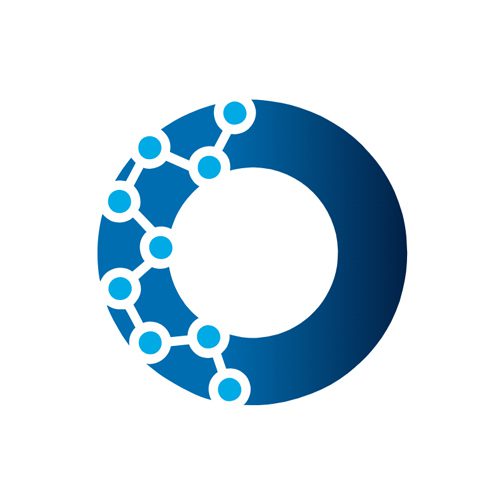When it comes to launching a new product or implementing a groundbreaking feature, the journey begins with thorough testing. In this context, two key methodologies that can make or break your project are Proof of Concept (PoC) and Minimum Viable Product (MVP). Both techniques are designed to validate your ideas and ensure that your product meets market needs. But both serve different purposes and are best suited for different stages of development.
Understanding the nuances between PoC and MVP is crucial for any entrepreneur or product developer. In this blog, we delineate the definitions, best practices, and ideal use cases for each. By the end of this article, you’ll have a clear roadmap to determine which approach is best for your project. So, whether you’re a startup founder or a seasoned product manager, keep on reading this article to discover the keys to ensure successful product development.
What is a MVP?
A Minimum Viable Product (MVP) is a functional, market-ready version of a product that includes only the essential features needed to attract early adopters and collect valuable user feedback. While Proof of Concept (PoC) is focused on verifying the technical feasibility of an idea, an MVP is designed to be released to real users or customers.
You must keep in mind that the primary objective of an MVP is to validate the product concept by measuring user engagement, understanding customer needs, and evaluating market demand. This approach helps minimize development costs by concentrating on essential features and allows for continuous improvement based on user feedback.
Furthermore, the iterative nature of MVP development enables companies to adapt to market changes, refine their product, and ensure it meets user expectations.
What is a POC?
A Proof of Concept (PoC) is a small-scale project designed to verify the feasibility of a specific idea or concept. Typically developed for internal testing at the earliest stages of product development, a PoC serves as a crucial step in the innovation process. Its primary aim is to demonstrate whether certain functionalities can be successfully implemented in a real-world product.
By creating a PoC, companies can identify potential obstacles and assess the viability of the concept before significant resources are invested in full-scale development.
Unlike a final product, a PoC does not need to be flawless. Instead, its primary goal is to provide evidence that the idea is worth pursuing. This early validation helps companies make informed decisions, reduce risks, and ensure that their innovations align with market needs and technical capabilities. PoCs are used across various fields, from technology and engineering to business and design, to test new ideas and concepts.
The process of developing a PoC involves several key steps. First, the idea is clearly defined and scoped. Next, a small team works on creating a prototype or a simplified version of the concept. This prototype is then tested in a controlled environment to evaluate its performance and identify any issues. Feedback from this testing phase is crucial for refining the concept and making necessary adjustments.
MVP vs POC: Factor-Wise Comparison
Now that you have understood the main concepts of MVP and POC, let’s dig further into this debate and analyze the differences – or similarities – between them.
- Goal
- Main Focus
- Steps Involved
- Range
- Result
- Real-Life Examples
1. Goal
MVP: The primary goal of an MVP is to quickly launch a product with just enough features to satisfy early adopters and gather valuable feedback for future improvements. The focus is on getting the product to market as soon as possible to validate the business model and user engagement. An MVP is designed to test the market fit and gather data on user behavior and preferences.
POC: A POC, on the other hand, is designed to verify the feasibility of a specific idea or concept. The goal is to determine whether the proposed solution can be successfully developed and implemented in real-world conditions. POCs are used to identify potential technical and operational challenges, ensuring that the concept is viable before significant resources are invested.
2. Main Focus
MVP: The main focus of an MVP is on user experience and market validation. It aims to provide a functional product that can be used by real users to gather feedback and insights. The emphasis is on delivering a complete, albeit minimal, user experience to test the product’s market fit and value proposition.
POC: Meanwhile, we should know that the main focus of a POC is on technical and operational validation. It aims to demonstrate that the proposed solution can be implemented and that it works as intended. The emphasis is on testing the feasibility of the concept, identifying potential obstacles, and refining the technical approach.
3. Steps Involved
MVP:
- Define the Core Features: Identify the minimum set of features that are essential for the product to function and provide value to users.
- Develop the MVP: Build a functional product with these core features, ensuring it is user-friendly and meets basic quality standards.
- Launch and Gather Feedback: Release the MVP to a small group of early adopters and collect feedback on their experience and suggestions for improvement.
- Iterate and Improve: Use the feedback to refine the product, adding new features and addressing user concerns.
- Scale and Expand: Once the MVP is validated and improved, scale up the product for a broader market launch.
POC:
- Define the Concept: Clearly outline the idea or concept you want to validate, including its intended functionality and potential applications.
- Create a Prototype: Develop a simplified version of the concept, focusing on the key features and technical components.
- Test the Prototype: Evaluate the prototype in a controlled environment to assess its performance and identify any issues.
- Gather Feedback: Collect feedback from stakeholders, including users, developers, and technical experts.
- Refine the Concept: Use the feedback to refine the concept, making necessary adjustments to improve its feasibility and viability.
4. Range
MVP: The range of an MVP is broader and more comprehensive. It involves developing a functional product that can be used by real users, testing the entire user experience, and validating the business model. An MVP is designed to be a complete, albeit minimal, product that can be iterated upon and improved over time.
POC: The range of a POC is narrower and more focused. It involves testing a specific idea or concept to determine its feasibility and identify potential challenges. A POC is designed to validate the technical and operational aspects of the concept, ensuring that it can be successfully developed and implemented.
5. Result
MVP: The result of an MVP is a functional product that has been tested in the market and validated through user feedback. The MVP provides insights into user behavior, preferences, and the overall market fit of the product. It serves as a foundation for further development and iteration, helping to refine the product and business model.
POC: The result of a POC is a validated concept that has been tested and refined. The POC provides evidence that the proposed solution is feasible and can be successfully implemented. It helps to identify potential obstacles and technical challenges, ensuring that the concept is viable before significant resources are invested in full-scale development.
6. Real-Life Examples
MVP:
Dropbox: Dropbox launched an MVP with a simple video explaining their file-syncing service. This video generated significant interest and user sign-ups, validating the market need for their product. They then used this feedback to develop and launch a full-fledged service.
POC:
Tesla Autopilot: Before launching the full Autopilot feature, Tesla conducted extensive POCs to test the feasibility and safety of the technology. These POCs involved simulations and real-world testing to ensure that the system could operate reliably and safely.
Final Thoughts
Minimum Viable Product (MVP) and Proof Of Concept (POC) are two well-known techniques implemented for validating your idea before the development phase kickstarts. While there are a number of similarities between both approaches, it is pertinent to analyze both in detail and comprehend their differences to avoid any ambiguity when it comes to product development.













